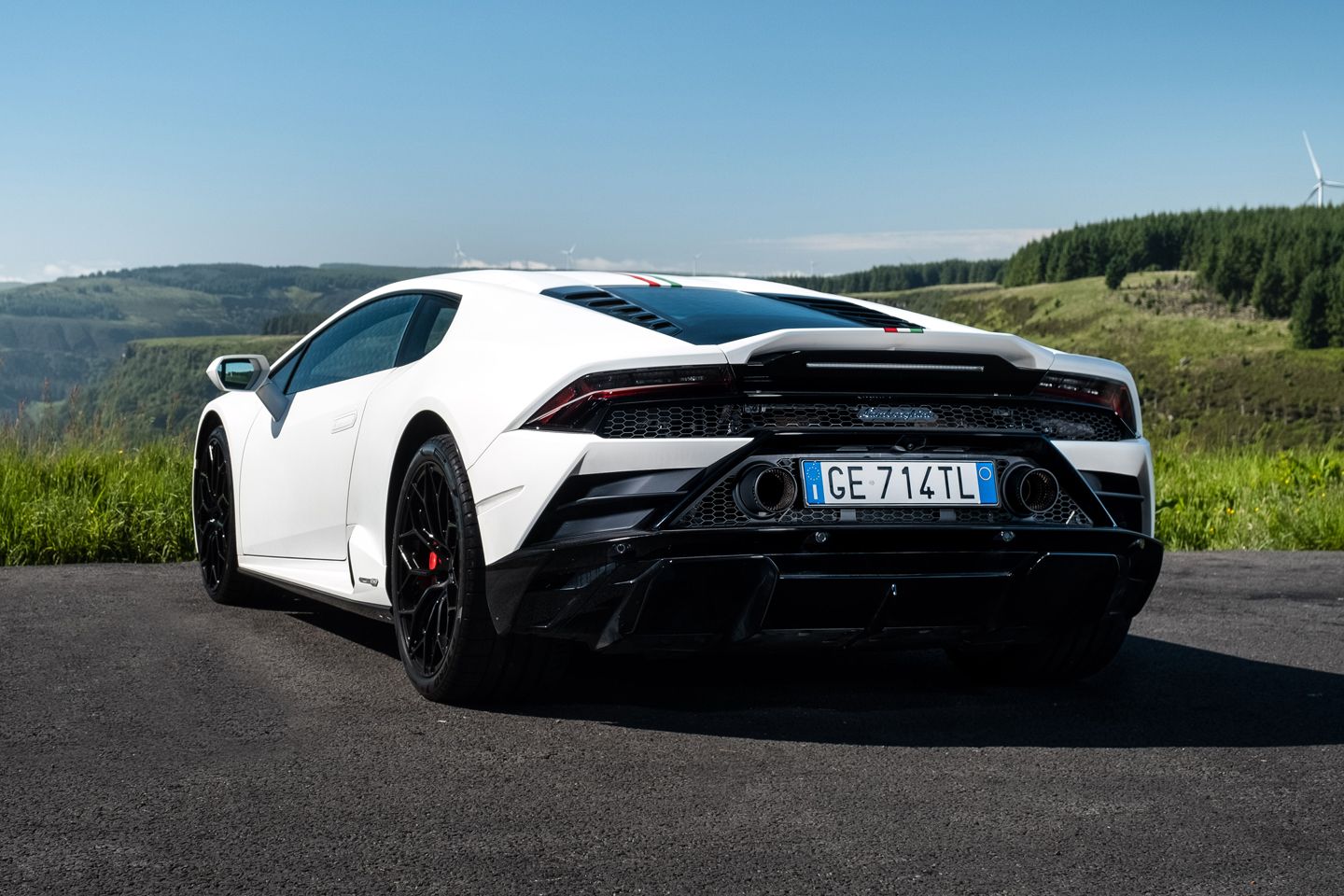Lamborghini Huracan Evo | PH Used Buying Guide
With production nearly done and the V10 never to return, the ultimate Huracan looks more appealing than ever
Key considerations
- Available for £175,000
- 5.2-litre naturally aspirated V10, all- or rear-wheel drive
- Noticeably improved over the old Huracan
- Well-built, mechanically strong and very exciting to drive
- Glitchy infotainment and a few dodgy sensors
- Prices are firm and likely to stay that way
‘Every Day Amplified’. That was the message greeting the press bods when they pitched up for the launch of the Lamborghini Huracan Evo in 2019.
Anyone who had been at the launch of the original Huracan in 2014 was probably rubbing their hands in anticipation when they saw the banner bearing that message stretched across the test track. After all, there weren’t many more hair-raising experiences in the world of motoring than the full-bore shriek of an unmolested V10, and the thoughtfully improved Evo promised more of the same with extra handling polish on top.
Those first Huracan coupes of 2014 bore the traditional ‘LP’ (longitudinale posteriore) prefix referring to the fore-and-aft alignment of an engine that ended up about a foot behind the passengers’ heads. And what an engine it was, a naturally-aspirated 90-degree 5.2 litre ten that churned out 610hp at 8,000rpm. The all-wheel drive 610-4 was joined in 2016 by a 610-4 Spyder, along with a new 580-2 coupe and convertible with a detuned (580hp) V10 powering the rear wheels only. A year after that the Huracan Performante burst into the light with an uprated 640hp motor and all-wheel drive only for both coupe and convertible. At £215,000 these were the pinnacle gen-one Huracans.
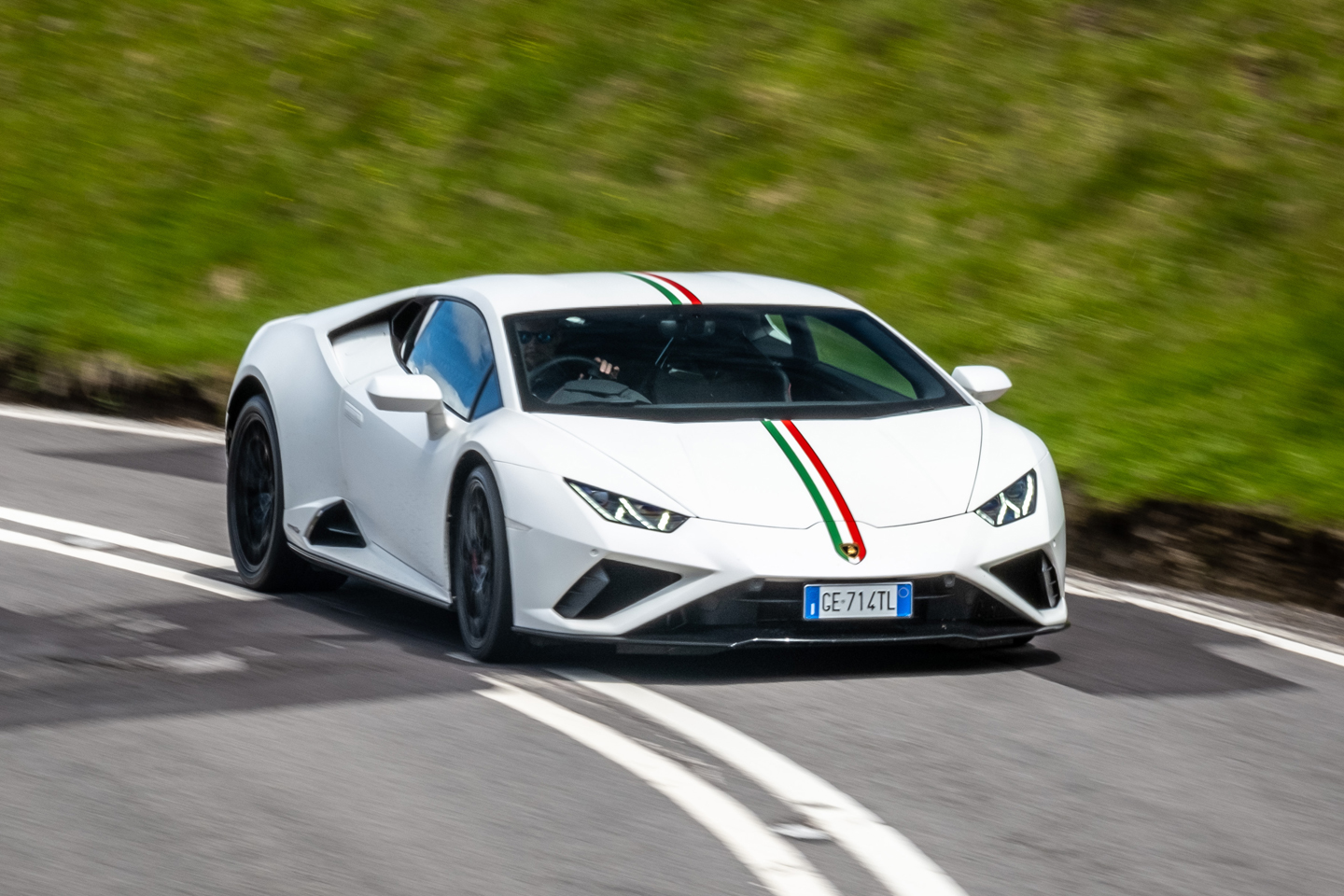
The Huracans we’re looking at here today are the ‘Evo’ cars that hit the showrooms in 2019. The first Huracan 640-4 Evo of 2019 had all-wheel drive, rear-wheel steering and essentially the same 640hp engine as the Performante but without the bronze cam covers. A year later Lamborghini released rear-wheel drive versions of both cars with the engine detuned to 610hp/413lb ft. The RWD was 33kg lighter than the AWD but traction losses held its 0-62mph time down to a still sprightly 3.3 seconds. The top speed was unchanged at 202mph, making the Evo RWD the first entry-level Lamborghini to hit the double ton.
These lower-powered versions of the Evo Huracan, the 610-2 and 610-4, are the subjects of today’s guide. As before, you could have either a coupe or a Spyder convertible. The Spyders were noticeably heavier than the coupes, by on average around 100kg. That made them slower again through the 0-62mph than the equivalent coupes but again the 202mph top speeds were identical.
Did we say ‘entry-level’ a minute ago? Yes. The £164,000 Evo RWD was £34k cheaper than the AWD. Its uncomplicated looks were a big part of the appeal for some. There were other Huracan Evo models, like the Fluo Capsule, the GT3-rivalling (but considerably more expensive at £260k) STO, and the sweet-steering Tecnica, which has been described as the ultimate ‘STO for the road’ Huracan, but they were all 640s and so are outside of our remit here.
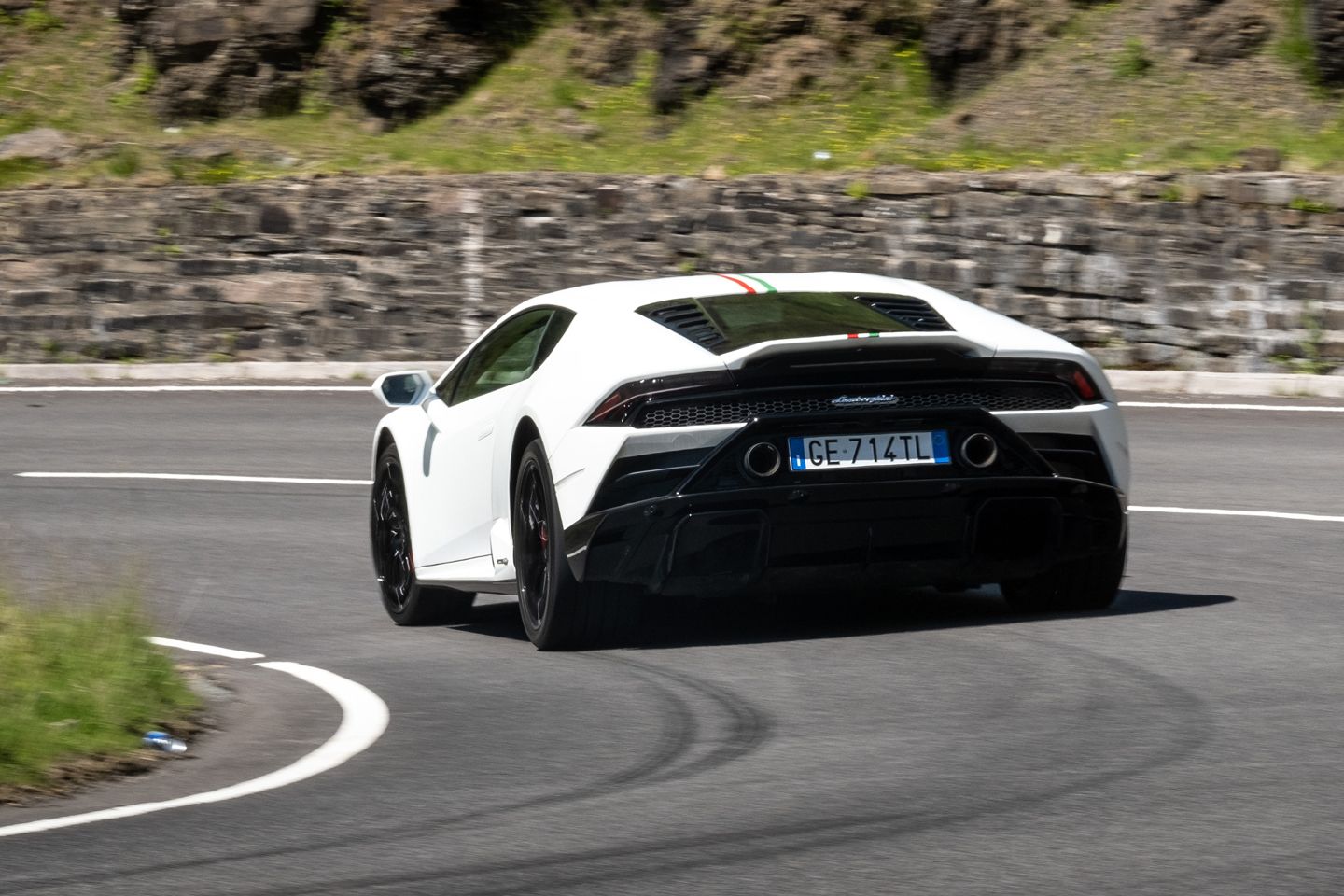
Top trumps stats are obviously important in the world of supercars, so it’s not surprising to see more 640s on the used market than 610s, but if you weren’t bothered about two-second 0-62mph bragging rights the 610 would give you all the thrills you desired.
The Evo models represent the last hurrah not only of the nat-asp V10 but also of the Huracan. 2024 is certainly going to be its last year. As far as we know the factory has enough orders on hand to keep it busy until the end of production, no new coupe orders having been taken since 2023, so as of this moment, leaving aside the Sterrato off-roader, if you want a Huracan it’s a Spyder or nothing. Having said that, it would be unusual for Lamborghini to turn down the opportunity of producing a few limited edition arrivederci models. The next Huracan will be a plug-in hybrid, most likely with a turbo V8 rather than a V10, so it looks like a double watershed moment for old-school big ten fans.
Even the most diehard Lamborghini fan wouldn’t have denied that there were faster and more efficient supercars out there from the likes of Ferrari and Porsche, but when it came to the delivery of drama, pure and simple, the Huracan Evo stood up strong against all comers. Used prices have reflected this by staying firm. The most affordable Evo on PH classifieds at the time of writing was a RWD at £185,000, £20k more than the new Evo RWD price in 2020. Accepting that that doesn’t take into account extras it’s still a clear indicator of the esteem in which these cars are now held.
SPECIFICATION | LAMBORGHINI HURACAN EVO LP640-4/EVO LP610-2 (2019/2020-on)
Engine: 5,204cc V10
Transmission: 7-speed dual-clutch auto, all-wheel (or rear-wheel) drive
Power (hp): 640@8,000rpm (610)
Torque (lb ft): 443@6,500rpm (413)
0-62mph (secs): 2.9 (3.3)
Top speed (mph): 202
Weight (kg): 1,422 (1,389)
MPG (official combined): 20.5
CO2 (g/km): 332 (330)
Wheels (in): 8.5 x 20 (19) (f), 11 x 20 (19) (r)
Tyres: 245/30 (35) (f), 305/30 (35) (r)
On sale: 2019 (2020)
Price new: £164,000 (Evo RWD) £181,000 (Spyder)
Price now: from £175,000
Note for reference: car weight and power data are hard to pin down with absolute certainty. For consistency, we use the same source for all our guides. We hope the data we use is right more often than it’s wrong. Our advice is to treat it as relative rather than definitive.

ENGINE & GEARBOX
The adoption by Lamborghini of Audi’s R8 V10 Plus drivetrain for its Huracan played a big part in attracting a lot more footfall to the Italian firm’s showrooms. The promise of German reliability was fulfilled in practice too.
Maximum torque didn’t pitch up until 6,500rpm, which might make you expect a lot of gearchanging to keep things on the boil, but then you would be forgetting the engine’s large swept volume of well over five litres and the fact that 70 per cent of the 413lb ft of torque was available from just 1,000rpm. That was more than enough to get a 1.4-tonne car haring up the road in a suitably gigglesome fashion.
Some said that the Evo’s factory race exhaust not only sounded better than any aftermarket Huracan offering, it was one of the best-sounding exhausts ever. You needed understanding neighbours though. Even the standard pipery made little effort to suppress the roar on startup and even less when you were hammering up through the gears in Sport or Corsa modes. Noise appreciation is, as we always say, an entirely subjective thing, but in a head-to-head din-off with a Ferrari 488 we’d put money on the Lamborghini receiving the most votes. Owners who wanted to have all the noise all the time, and not just from 4,000rpm, could achieve that through a simple (and easy to reverse) vacuum hose disconnection.
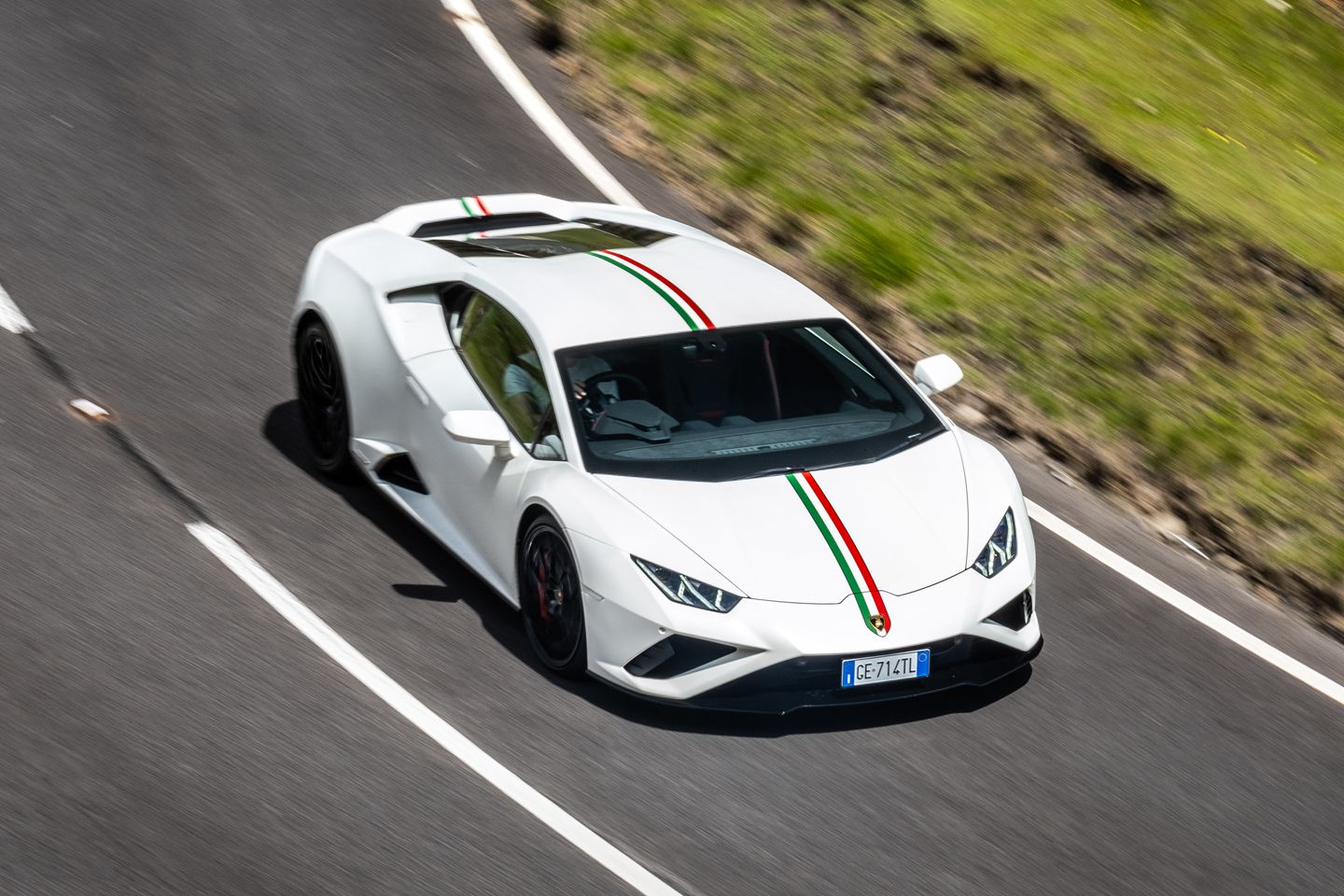
Mechanically, very little goes wrong. Pre-Evo Huracans sometimes went into limp mode for no apparent reason. Lamborghini told owners not to fret over it, and in fairness it was usually easily sorted by turning it off and on again. Rough running accompanied by a light on the dash could generate instant mental images of bankruptcy but more often than not it was nothing worse than a faulty cam sensor. Batteries will lose charge if the cars aren’t driven or kept on a tender.
The Huracan’s dual-clutch transmission was the same as the one used by Audi in the R8. It put worries about Lamborghini’s old ISR automated manual and the Gallardo’s fragile E-Gear system firmly in the past, and as you would expect its functionality was sharpened up for the Evo.
Servicing wasn’t cheap. Minors would be around £1,800 and bills for majors could easily top £4,000. Using independents like RE Performance would substantially reduce your costs but might also limit the car’s value or even its saleability if you were looking to put it through the dealer network. The Lamborghini Maintenance Pack ran for the same three-year period as the warranty, which you could extend to five years – a very good choice if you were planning on putting anything approaching ‘normal’ miles on your car. Huracan VED is £570 a year.
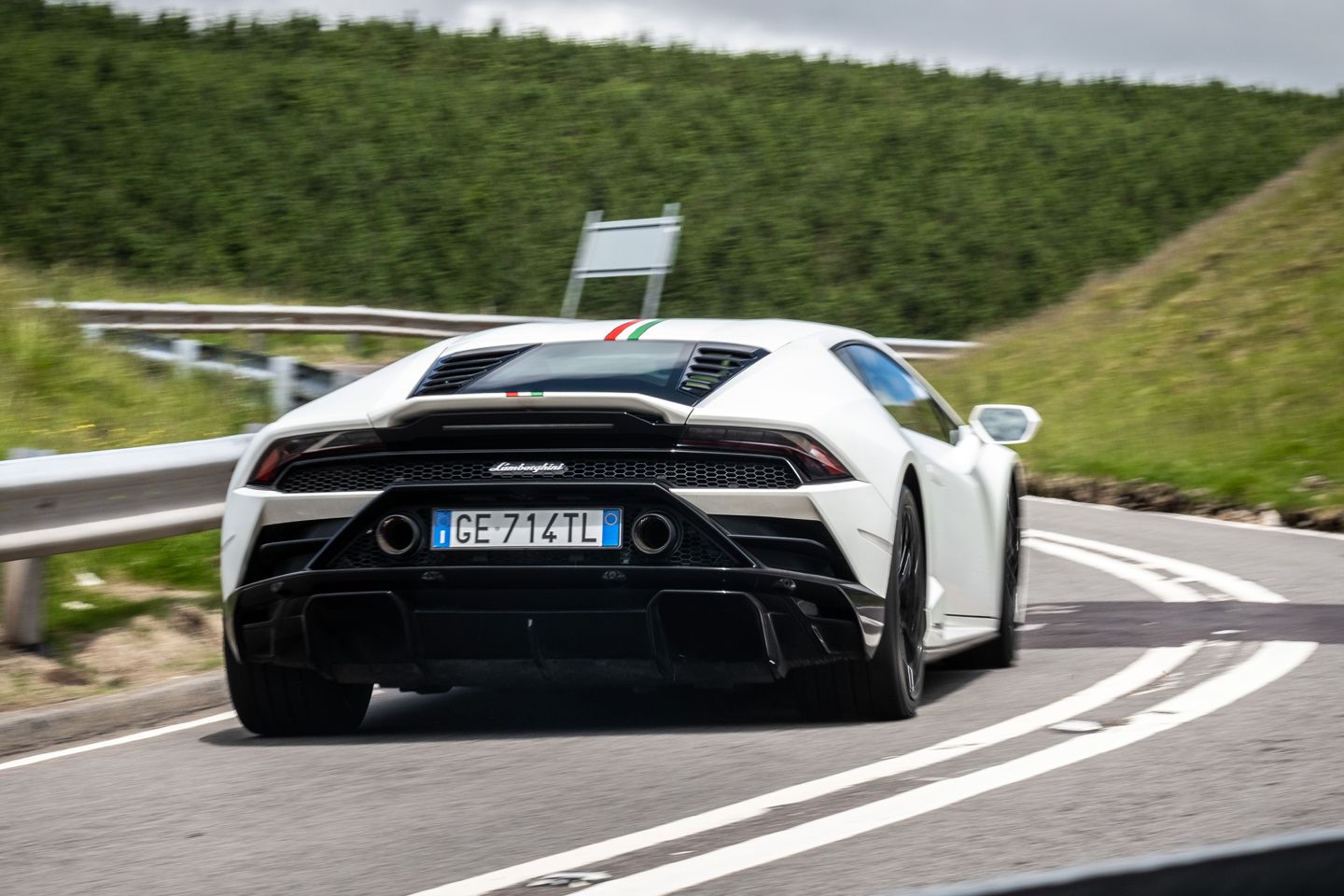
CHASSIS
The Huracan’s chassis combined a carbon fibre and aluminium spaceframe chassis with double-wishbone magnetically-damped suspension all round, a pukka mix by any standards and one that worked really well. Improvements to the chassis on the Evo version made it a far more precise and rewarding tool, as Emmanuele Pirro demonstrated to PH on the first UK drive here.
At least as important for the end-user was the fact that the Huracan didn’t feel intimidatingly large. At just over 1.92 metres it was actually wider than a Range Rover but it managed to disguise that girth very well, making it very useable on British B roads. By comparison, the Ferrari F8 Tributo was 1.98 metres wide and the McLaren 720S nearly 2.1 metres. The Lamborghini was significantly shorter than both of these.
But which Huracan Evo handled better, the AWD or the RWD? Rear-wheel drive cars usually drive more nicely than all-wheel drive versions of the same car, because RWDs weigh less and the weight loss all comes off the front end of the car, restoring steering purity. That principle held true for the Evo. 33kg was shorn off the front of the RWD to produce a 40/60 front/rear weight distribution, and the bespoke rear-wheel steering setup grafted an extra layer of driving pleasure onto the lighter car. The electronic steering was lighter and less involving than that of hydraulically-helmed cars from the likes of McLaren but the turn-in was scalpel-sharp and the RWD’s limited-slip diff kept corner exits clean.

The AWD Huracan was no dummy. It also blew your socks off in every area. The RWD didn’t have the customisable ‘Ego’ mode to delink chassis and engine settings, and of course nor did it have torque vectoring, but it did have an extra edge of delicacy at speeds where the traction advantages of all-wheel drive had become a distant memory. It felt better in Corsa mode than pre-Evo RWD Huracans too by virtue of it no longer being an ‘everything off, over to you mate’ setting. As mentioned earlier, in the RWD Huracan you lost the ability to brag about two-second 0-62mph times but you gained in the unquantifiable zone of driver satisfaction.
Carbon brakes were standard on AWD Huracans and optional on RWDs. Brake squeal on the steels has been bad for some owners, especially at low speed and in low temperatures. Some owners reckoned that slamming the brakes on from a reasonable speed would do away with it for a short while at least, but not everyone found solace in that.
Not many Huracans came without the 40mm front air lift option box ticked (we think it may have become standard on the Evos). It’s a must if you want to preserve the integrity of the front underparts. It could be activated at any speed up to 45mph: above that it would automatically lower itself. That was supposed to happen, but the ride height sensors weren’t infallible: the front might also drop when you had a load in the car, like a passenger. That could be annoying if you’d raised it for some uneven ground and were expecting it to stay raised. Good battery condition was essential to keep the lift working well.
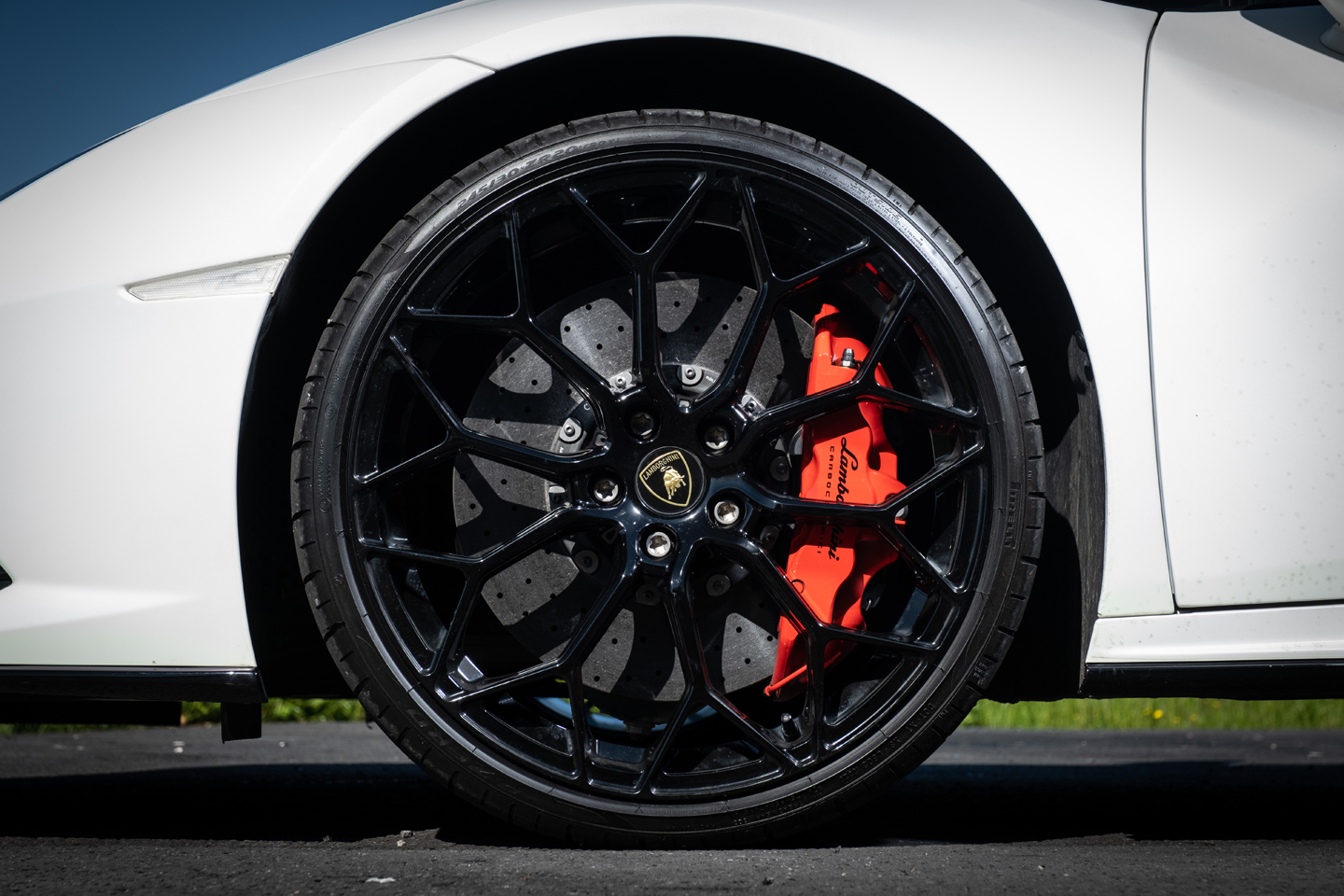
BODYWORK
Most serial Lamborghini buyers agreed that the Evo looked better than previous-gen Huracans, Performante-excepted. Carbon bonnets and rear decks were available. For some, citrus hues like orange and green or other eye-poppers like Viola Pasifae or Verde Shock were the ‘only’ Huracan colours. If you preferred something less shouty, Grigio Artis was a classy pick, as was Blu Astraeus. Black really emphasised the cleanliness and compactness of the Huracan’s body.
Ad Personam paint jobs added a comfortable five-figure sum to the final invoice. They were also capable of creating additional, and also large, paint-matching bills down the road if any repair work was needed. There were some issues with factory paint quality so if you’re buying from a dealer make sure it’s them fixing the blemishes and not you.
Fastenings for the engine cover latch could come adrift. 21 examples of May 2022-built Huracans were recalled in the US to put right a left door handle issue that could make it impossible to open the car from the outside and therefore potentially trap the (presumably comatose) passenger inside the car.
There were two fuel flow assemblies in the fuel tank, one high and one low, to measure the level of fuel, but the sensors acquired a reputation for failing. Replacing the top one was a relatively quick job, but if the bottom one blew that was a different and very much longer job requiring a tank drop. The filler flap sometimes didn’t open, and the thin emergency release cord that was meant to help you in that scenario would get brittle over time and snap. Early (2016) pre-Evo Spyders did have some problems with the hood lifting mechanism but we’re not aware of any such problems with the Evo models. Windows have occasionally jammed at the halfway position.
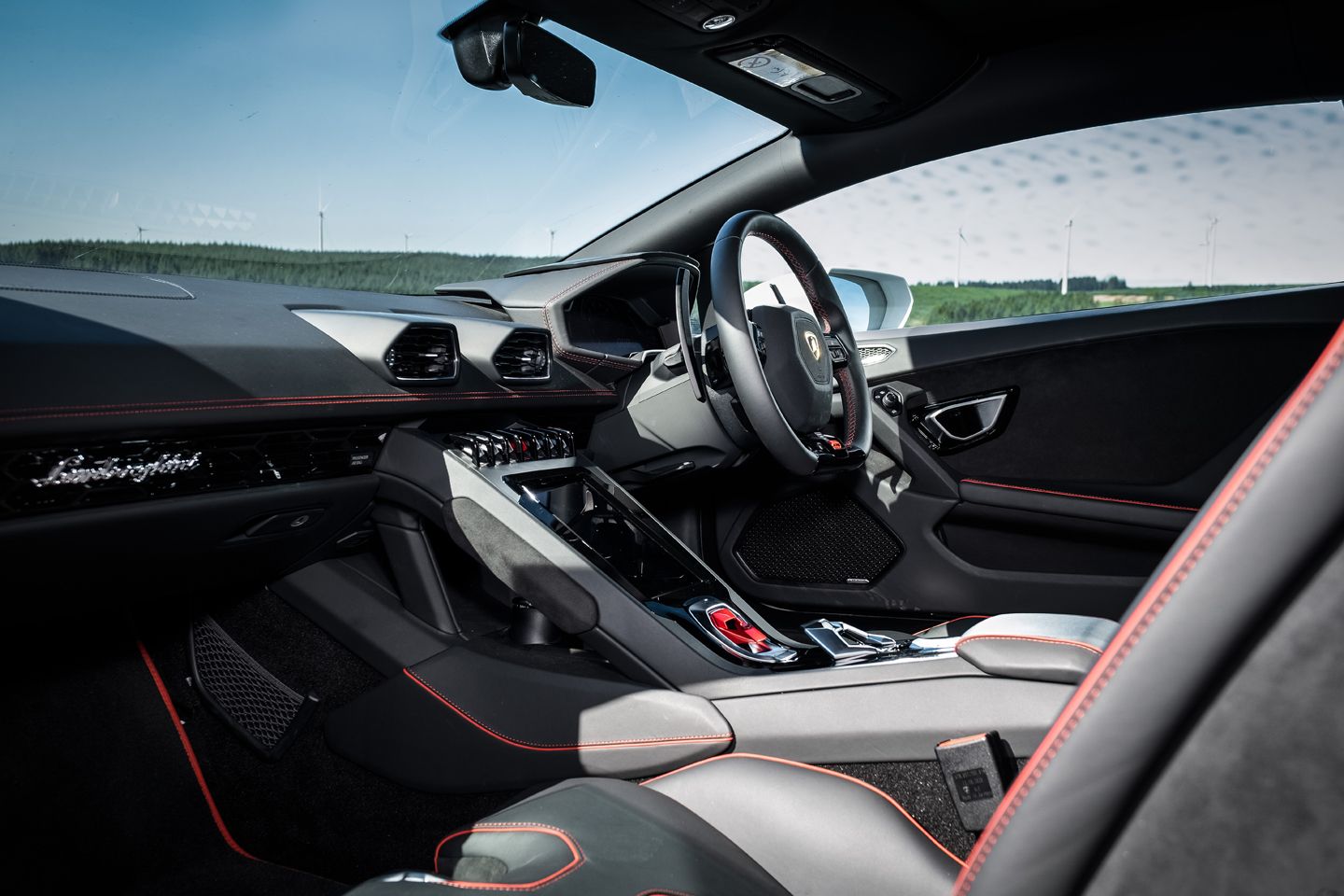
INTERIOR
The Huracan’s interior was nicely decluttered for the Evo. Lamborghini didn’t adopt VW’s infotainment system, even though they had had it in the pre-Evo Huracans. The home-grown 8.4-inch screened Italian setup looked cool but wasn’t as good as the German equipment. You had to go into the touchscreen menus to alter the volume or the climate, although if everything was working correctly you could alter the volume with a two-finger swipe. The touchscreen iconography and what seemed like a constant stream of messages from head office made it hard to assimilate genuinely useful information quickly. Inputting addresses into the sat nav was a slow process and the system sometimes didn’t seem to know where the car was. The Sensonum option was well worth having if enhanced audio dynamite was your thing.
Lamborghini took a long time to get the Alexa function up and running (even though it worked fine on the Urus). Having got access to Alexa, plugging the phone in sometimes cut off your access to it. Dealers struggled to illuminate uncooperative Evo infotainment screens. If it was taking a while (15 minutes) for the full colour to come up on the screen, that was a bad sign. Bluetooth would drop out and software ‘updates’ often brought new and additional problems like a nasty popping noise on music track changes. Using the USB drive to play music might freeze up all the screen buttons until you disconnected the USB. Loading music to the hard drive was laborious and the results weren’t altogether satisfying with laggy commands and no obvious filing structure.
Apple CarPlay worked well on the Evo but voice commands for Nav and Phone could be patchy and the system didn’t always recognise wireless connections.
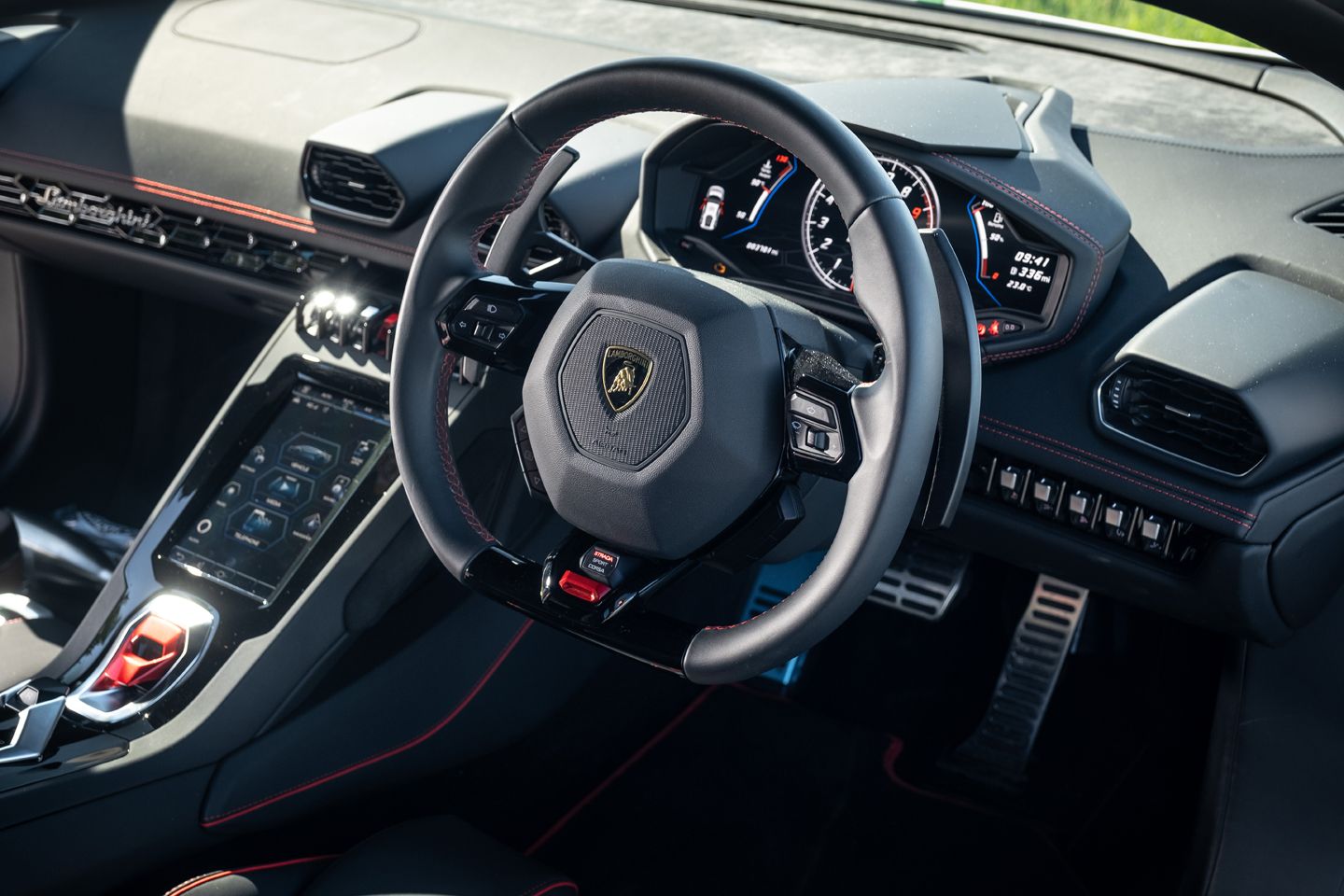
Some cars have had false warnings come up for low coolant or washer fluid levels or low tyre pressures. Rearview cameras might randomly go on strike and then might equally randomly come back on the next day. In fairness, Audi and Porsche were also having some MMI/infotainment problems at this time. Evos from mid-2021 on seem to have more stability but the feeling you get from current owners’ forums is that it’s still a work in progress.
The Evo’s carbon fibre shift paddles were a nice touch and the optional sports seats, though firm, were wonderfully supportive and quite an improvement on any of the seats previously available, including the Evo’s standard ones which seemed to focus most of your weight onto your coccyx. Having said that, some owners found the exact opposite to be the case, i.e. the sports seats only supported them at specific points. Takes all sorts. Either way, you sat low down in an Evo. Even with the standard chairs, six-foot-plus drivers had no problems fitting in. One or two owners with the sports seats found that the padding sections would unstick. Others found flaws in the leather on the dashboard. Getting a dealer to sort that one out might remind you of the old saw about the cure being worse than the disease.
Some cars had hard-to-trace rattles coming from somewhere in the door areas. Others creaked from the bulkhead behind your head when you were negotiating a driveway. Loose rear-view mirrors are normally associated with pre-Evo cars but it’s worth giving Evo ones a wobble just to make sure.

PH VERDICT
Some liked to provoke comment by saying that the Huracan was just an expensive Audi R8, the Performance version of which was well over £20k cheaper than the Lamborghini. Others took the more considered view that the R8 was a cheap Huracan.
Whatever, for a while at least until the Urus SUV took hold, the Huracan was the most bought Lamborghini ever and the much improved Huracan Evo now appears to have successfully distanced itself from the R8 in terms of desirability. In terms of performance numbers and track times, cars like the McLaren 570S or the 80hp/125lb ft more powerful F8 Tributo would beat either version of the Huracan Evo, but neither of them delivered the Lamborghini’s howling aural blast. For the lucky ones facing a choice between those two, the decision could easily boil down to what was more important, lap times on occasional track days or a hair-raising aural experience that you could enjoy every time you got behind the wheel. The Evo still gave you the opportunity of brilliant track day fun as well. You could drive it like you stole it and it wouldn’t bite you.
Perhaps less critical at this level of the market, but worth mentioning all the same, was the Huracan’s price relative to its rivals. The Evo RWD was about the same price as a Porsche 911 Turbo S. While the 911 was entirely admirable and hard to criticise on any level, few would argue that it offered more driving drama or a greater sense of occasion.
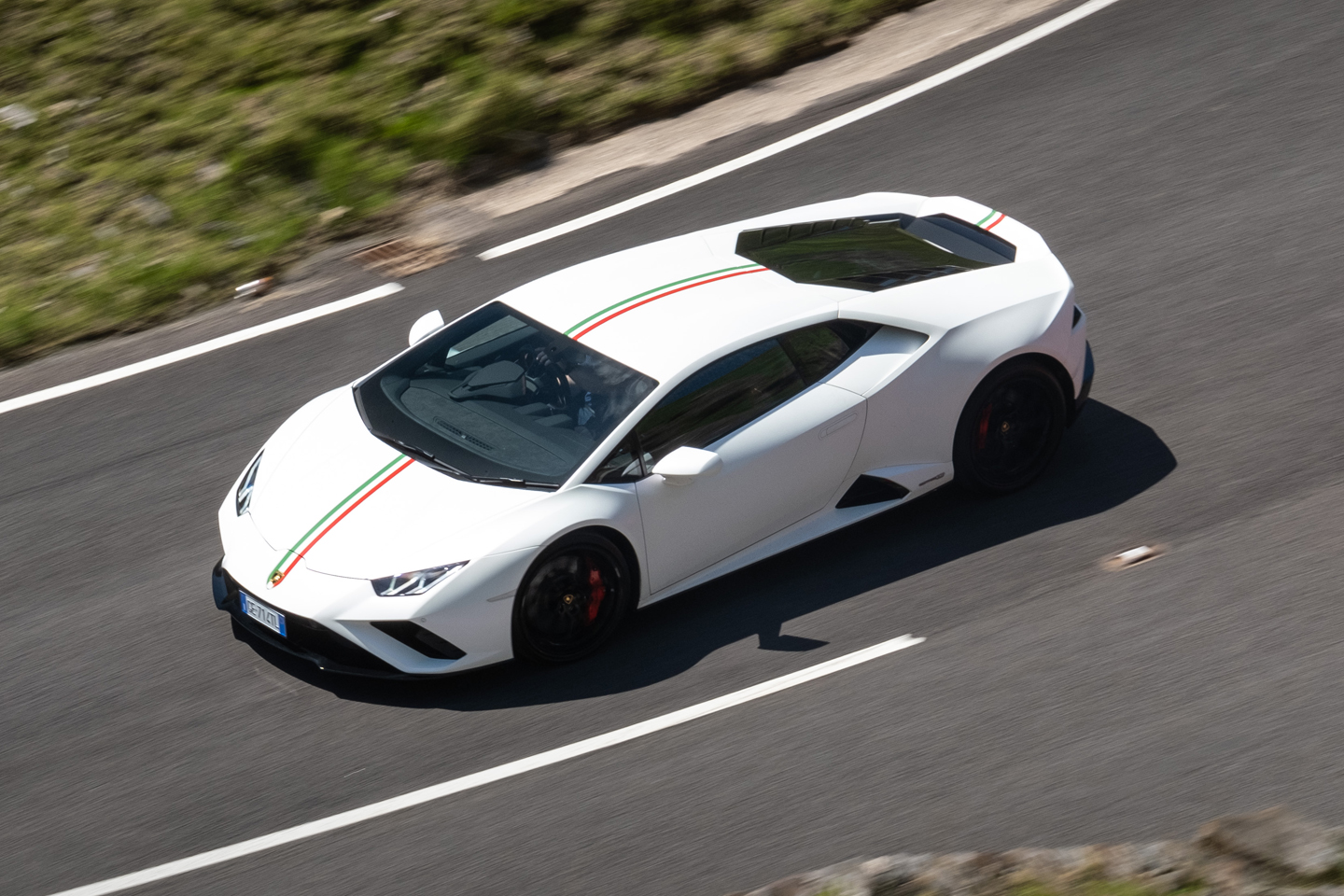
Many thought that the RWD was a sweeter steer than the AWD Huracan too, with a performance disadvantage that was marginal at best. That might make you wonder why there are so many more 640 Evos on the used market than 610s.
Whatever your views on that might be, the most important piece of advice when buying an Evo from anywhere other than a Lamborghini dealer is to have it thoroughly inspected by a main dealer before you flash the cash. Huracans are tough, well-built cars that bear their mileages really well, but the downside of that toughness is that it makes Huracans vulnerable to mileage ‘haircuts’.
Here’s the most affordable Evo on PH at the time of writing (Feb 2024), a 2,000-miler from 2022 at £184,950. We’re told it’s an AWD car but because the dealer doesn’t tell us the model (and therefore the power) we’re assuming it’s a 610 and not a 640. Add £10k to that gets a Spyder, this 2019 example showing 6,000 miles. This orange RWD Spyder is a real treat, though we’re moving up the price ladder now: it’s a fiver short of £225k. For five grand more you can have what is to all intents and purposes a ‘new old stock’ car in this RWD Spyder with just 180 miles on the clock.
Huracan, body 1924mm, with mirrors 2236
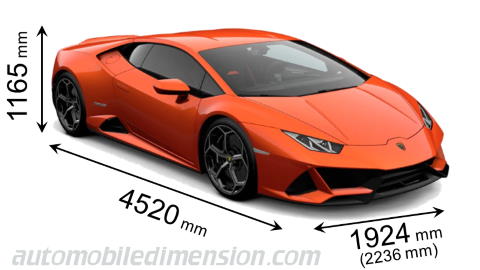
McLaren 720S, body 1930mm, with mirrors 2161
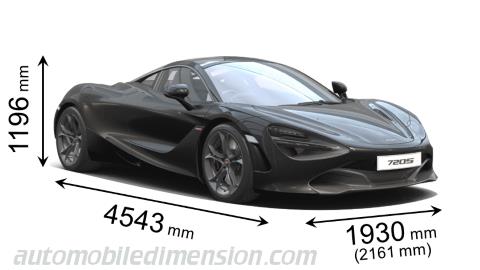
and just for comparison Range Rover L405
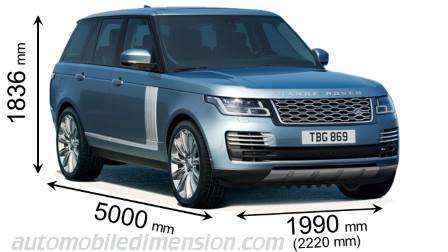
Width something many keen drivers care about, if there was a 'junior supercar' which was noticeably narrower than the others that would be quite interesting, but they're all about the same in reality. (I find 1.93m just about ok in my 570GT, it doesn't stop me enjoying B-roads)
Huracan, body 1924mm, with mirrors 2236

McLaren 720S, body 1930mm, with mirrors 2161

and just for comparison Range Rover L405

Width something many keen drivers care about, if there was a 'junior supercar' which was noticeably narrower than the others that would be quite interesting, but they're all about the same in reality. (I find 1.93m just about ok in my 570GT, it doesn't stop me enjoying B-roads)
10cm each side for the mirrors is about right, so 1.9x m for the body.
Bottom line, the Huracan isn't 20cm slimmer than the McLarens, they're effectively the same width on the road. Which is fine, but it's not the significant difference it's presented as.
10cm each side for the mirrors is about right, so 1.9x m for the body.
Bottom line, the Huracan isn't 20cm slimmer than the McLarens, they're effectively the same width on the road. Which is fine, but it's not the significant difference it's presented as.


If it’s “mechanically strong” and “very little goes wrong”, etc, why the need for an extended warranty if accruing “‘normal’” miles??
A car is either well-built and reliable or it isn’t.
BTW, anyone know how many RPM an Evo would be pulling in 7th when cruising at 80mph? Ta


If it’s “mechanically strong” and “very little goes wrong”, etc, why the need for an extended warranty if accruing “‘normal’” miles??
A car is either well-built and reliable or it isn’t.
BTW, anyone know how many RPM an Evo would be pulling in 7th when cruising at 80mph? Ta

Gassing Station | General Gassing | Top of Page | What's New | My Stuff

